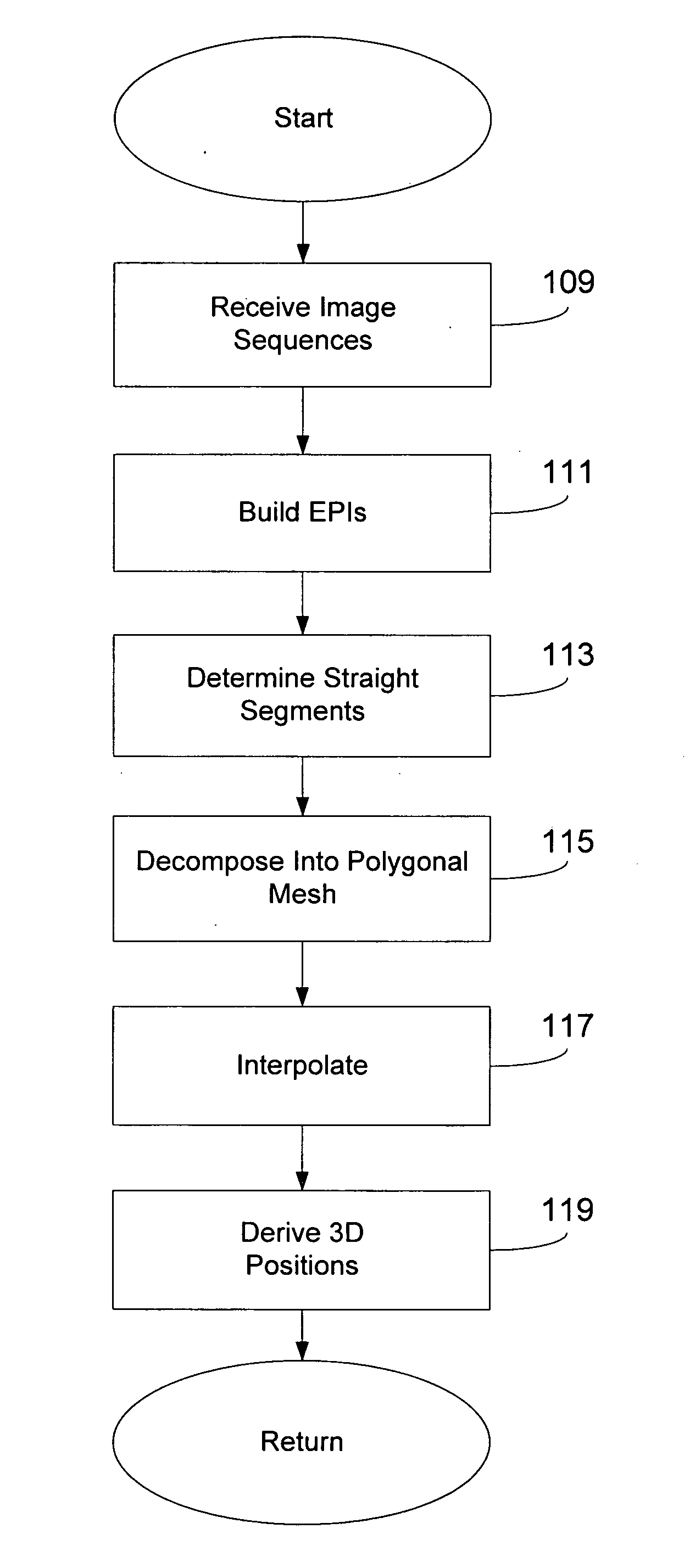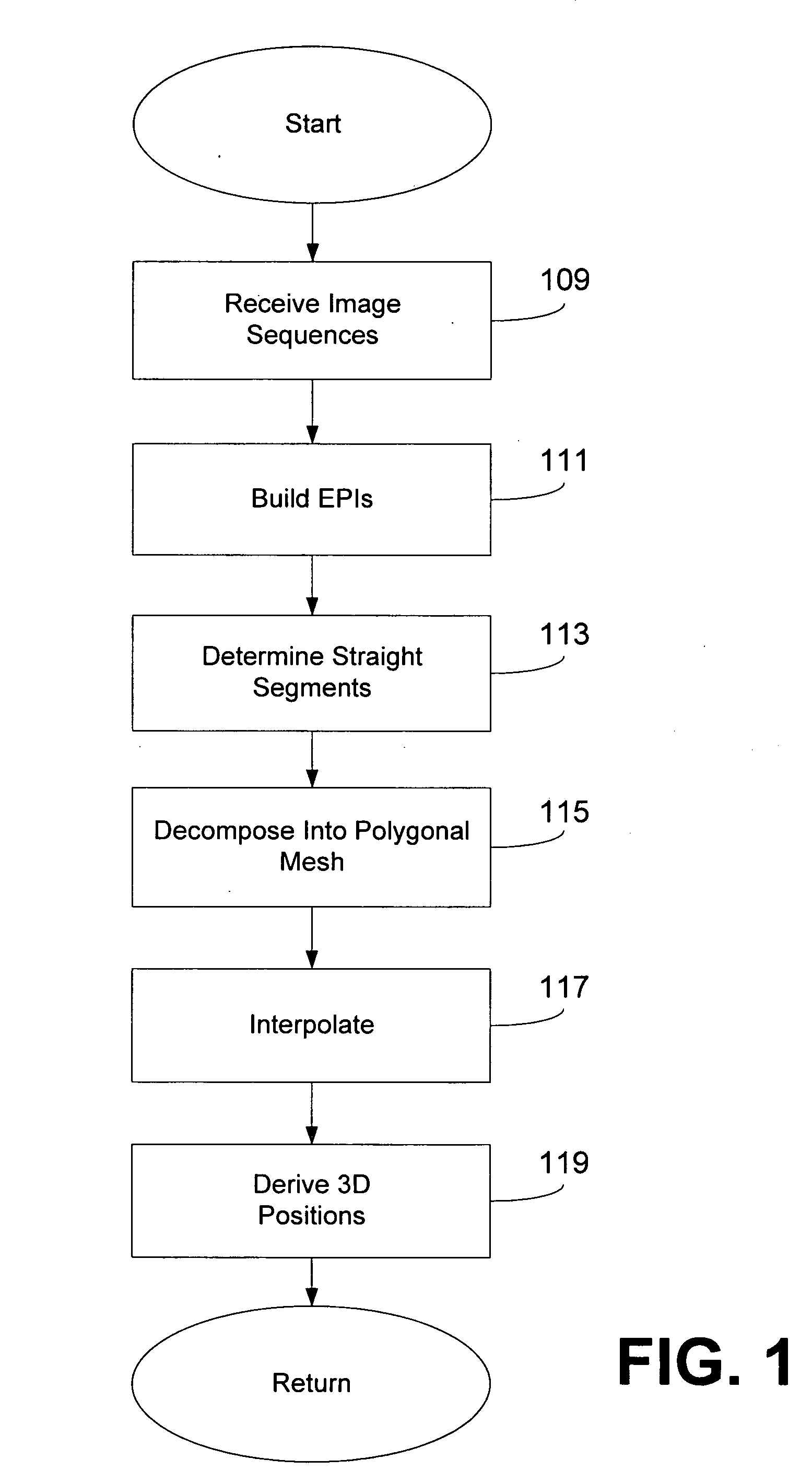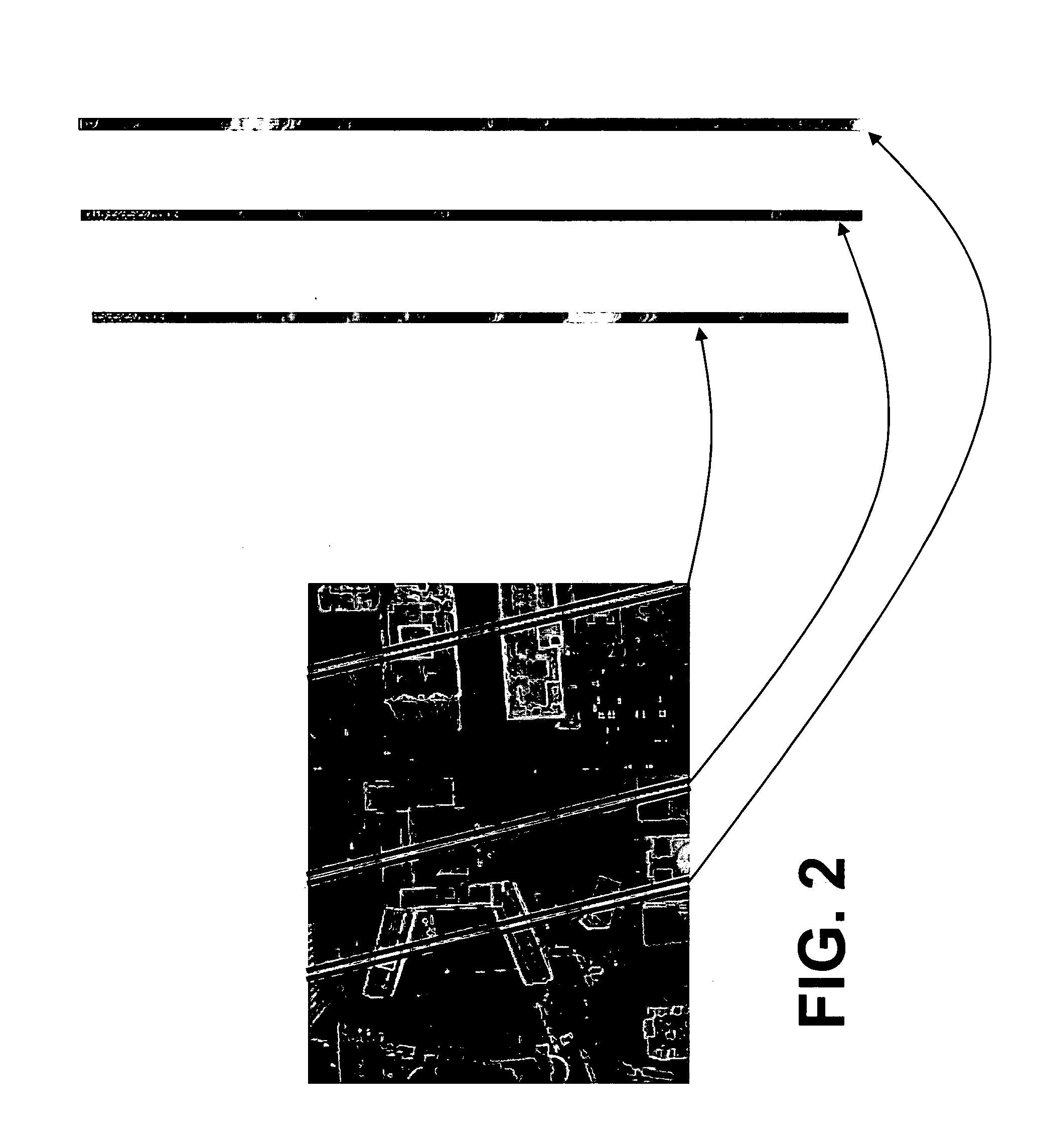System and method for three-dimensional estimation based on image data
a three-dimensional estimation and image data technology, applied in image analysis, instruments, computing, etc., can solve the problems of inability to estimate the depth of features without a component perpendicular to the motion direction, difficulty in obtaining a three-dimensional model, and information making up a three-dimensional model,
- Summary
- Abstract
- Description
- Claims
- Application Information
AI Technical Summary
Benefits of technology
Problems solved by technology
Method used
Image
Examples
Embodiment Construction
[0023] A flow diagram of a process in accordance with aspects of the invention is shown in FIG. 1. In block 109 the process receives a set of images. Preferably the set of images form one or more image sequences, with preferably each image in each sequence captured at regularly spaced sites on a straight path. In some embodiments the images are captured by an image acquisition device as discussed further below.
[0024]FIG. 2 illustrates an image of a scene. The image is taken from an altitude above the scene, with the scene including a number of structures, including tall buildings, streets, and other features present on an urban landscape. Three lines are superimposed on the image, with each line bounded by dark lines for illustrative purposes. Generally an acquisition device, such as a camera, is transported along a line, with the camera acquiring images, preferably evenly spaced, along the line. For the example shown in FIG. 2, the camera may be transported by an aircraft along th...
PUM
 Login to View More
Login to View More Abstract
Description
Claims
Application Information
 Login to View More
Login to View More - R&D
- Intellectual Property
- Life Sciences
- Materials
- Tech Scout
- Unparalleled Data Quality
- Higher Quality Content
- 60% Fewer Hallucinations
Browse by: Latest US Patents, China's latest patents, Technical Efficacy Thesaurus, Application Domain, Technology Topic, Popular Technical Reports.
© 2025 PatSnap. All rights reserved.Legal|Privacy policy|Modern Slavery Act Transparency Statement|Sitemap|About US| Contact US: help@patsnap.com



